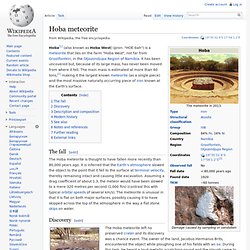

Scientists reconstruct Russian meteor's path. A dashboard camera caught the meteor streaking across the Russian sky on… Colombian scientists have reconstructed the interplanetary path of a meteor that flamed across the Russian skyline this month and smashed into the countryside, leaving hundreds of people injured.

The meteor, estimated to be about 45 feet across and weighing 10,000 tons, was flung toward Earth as it orbited around the sun. It wasn’t a declaration of war by bugs on Klendathu after all. Apparently, it was just a matter of time before it hit, researchers concluded in a study published this week on ArXiv.org. The study's authors, from the University of Antioquia in Medellin, Colombia, triangulated the meteor’s position using landmarks, shadows and camera footage. Other data points included the lake near Chelyabinsk where a meteor fragment landed and left a huge hole in the ice, and the center of Korkino, a small town to the south, where video showed the meteor passing overhead. A copy of the paper is available here. Hoba meteorite. Hoba[1] (also known as Hoba West) (pron.

"HOE-bah") is a meteorite that lies on the farm "Hoba West", not far from Grootfontein, in the Otjozondjupa Region of Namibia. It has been uncovered but, because of its large mass, has never been moved from where it fell. The main mass is estimated at more than 60 tons,[1] making it the largest known meteorite (as a single piece) and the most massive naturally occurring piece of iron known at the Earth's surface. The fall[edit] The Hoba meteorite is thought to have fallen more recently than 80,000 years ago. Discovery[edit] The Hoba meteorite before the construction of the circular steps. The Hoba meteorite left no preserved crater and its discovery was a chance event. Friedrich Wilhelm Kegel took the first published photograph of the Hoba meteorite.[2] Description and composition[edit] Hoba is a tabloid body of metal, measuring 2.7×2.7×0.9 metres (8.9×8.9×3.0 ft).
Modern history[edit] In an attempt to control vandalism and with permission from Mrs. Meteorite. Hoba meteorite: the largest known intact meteorite.

It was discovered in Namibia A meteorite is a solid piece of debris, from such sources as asteroids or comets, that originates in outer space and survives its impact with the Earth's surface. It is called a meteoroid before its impact. A meteorite's size can range from small to extremely large. When a meteoroid enters the atmosphere, friction, pressure, and chemical interactions with the atmospheric gases cause it to heat up and radiate that energy, thus forming a fireball, also known as a meteor or shooting/falling star. More generally, a meteorite on the surface of any celestial body is a natural object that has come from outer space.
Meteorites have traditionally been divided into three broad categories: stony meteorites are rocks, mainly composed of silicate minerals; iron meteorites that are largely composed of metallic iron-nickel; and, stony-iron meteorites that contain large amounts of both metallic and rocky material.